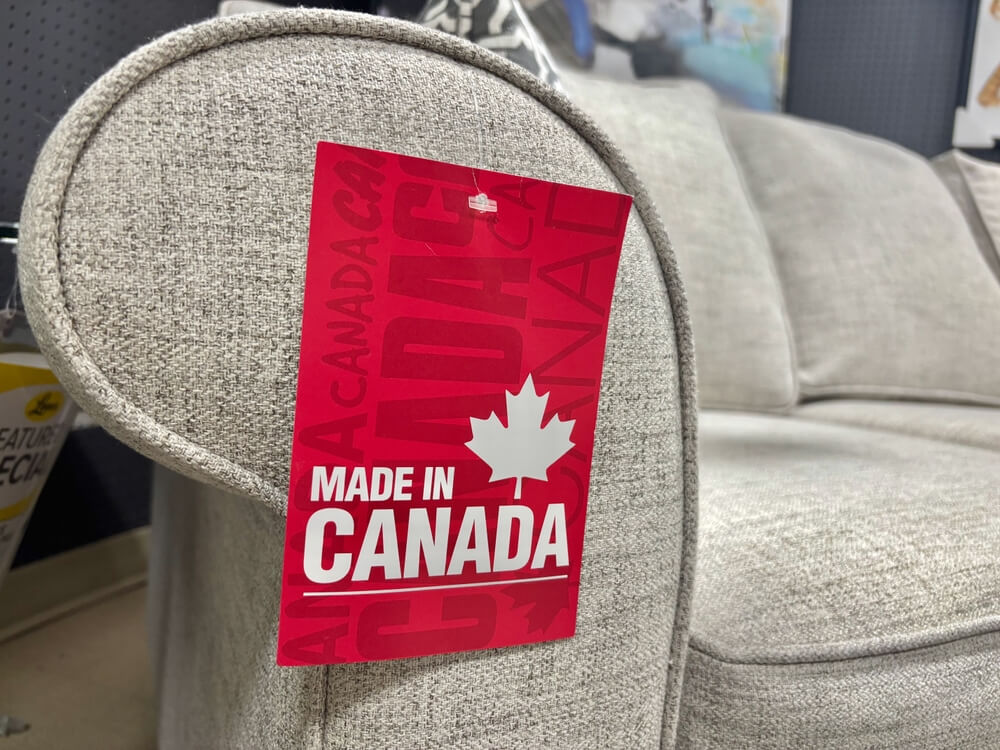
If you are not redirected within 30 seconds, please click here to continue.
Samedi: 10h – 16h HAE

If you are not redirected within 30 seconds, please click here to continue.
If you are not redirected within 30 seconds, please click here to continue.
Could Covid-19 Cause Cashless Payments to Be the New Normal?

Table of Contents
It’s hard to pay from six feet away.
Plus, the idea of touching cash is making many queasy these days, which is why the COVID-19 pandemic may be speeding up the move to a cashless society.
According to a recent survey by Payments Canada, which compared spending behaviours pre-COVID-19 and at five weeks into the pandemic, 62% of Canadians reported using cash less than before the crisis.
How are people paying? They are using Interac e-Transfer, PayPal and credit cards more frequently, according to Payments Canada.
How are Canadians shopping? Thirty-eight percent are using e-commerce platforms for items, including groceries, and 26% are using food delivery services more often than pre-COVID-19. For in-store purchases, 53% reported using card or mobile tap payment more often than pre-pandemic.
This movement has accelerated a trend already underway, according to Payments Canada. In its 2019 Canadian Payment Methods and Trends Report, it found that electronic payments accounted for 73% of all transaction volumes, compared with 21% for cash.
Similarly, the Bank of Canada (BoC) has been tracking methods of payment every four years. In its latest survey from 2017, the BoC found that paying with cash continues to decline, both in the number of transactions and in their value.
If not cash, then what are payment options for Canadians?
Cashless options
Debit cards
According to recent data collected by Canadian payments network Interac, a record-setting 61.3 million Interac e-Transfer transactions took place in April. Since mid-March, first-time Interac e-Transfer users increased by 43%, and businesses report receiving 35% more Interac e-Transfer transactions than expected. Also, since mid-March, the average number of transactions increased by 9% compared to the same time last year.
Debit cards draw money from a consumer’s bank account. Most allow for the cardholder to tap for contactless payment through a small radio frequency antenna and microchip inside the card. Others require you to input a personal identification number, also known as a PIN, at a point-of-sale terminal. Both use the same secure networks.
Email money transfers are primarily processed via Interac e-Transfer at many financial institutions in Canada or through their online or mobile banking platforms. This allows you to pay a business or an individual through their email. Sometimes there are fees.
Credit cards
A financial institution, often a bank, issues credit cards that let cardholders borrow funds to pay for goods and services. Many credit cards offer rewards and perks, making them an ideal everyday payment option. However, be careful to pay your statement every month and use this option responsibly. If the cardholder carries a balance on the account, the money will accrue interest . The borrower will pay the credit card issuer the balance plus the interest in installments, as well as any additional agreed-upon charges. This is different from prepaid cards, even though they may come from the same brand, such as Visa.
Not just handling physical cash, but even punching in your credit-card code on a card reader that many other shoppers have touched is something many people want to avoid during the pandemic. So many credit-card companies that offer contactless payments raised their tap limits from $100 to $250 in April, according to Canadian payment processing company Moneris.
Prepaid cards
Prepaid gift cards or prepaid credit cards are preloaded with a certain amount of money. Prepaid credit cards and prepaid gift cards differ, however. Prepaid gift cards are transferable, whereas prepaid credit cards are not.
Prepaid credit cards belong to a registered account, so they can be reloaded but are not transferrable. They are easier to qualify for than traditional credit cards and help keep users to a budget. Some may come with a monthly fee.
Of course, there are also gift cards from specific retailers. Some of these are reloadable, but you are limited to purchases at the retailer or sometimes its affiliated companies.
Mobile wallet
Mobile devices were used by nearly 35% of Canadians for contactless payments regularly in 2018, according to Payments Canada.
Mobile wallets are apps available on many mobile devices to store your payment information, such as credit cards, debit cards, gift cards, points cards and even tickets. You can use your mobile wallet for contactless payments through near-field communication radio frequencies at retailers that are set up for it.
Examples of mobile wallets are Apple Pay, Google Pay and Samsung Pay.
Retailer apps
Some retailers’ apps can be used directly for payment. Customers can preload money, order, pay, and generally use loyalty reward points, all within the app. Examples include Starbucks, Tim Hortons and Uber apps.
Online
There are more options than ever to pay for orders online. Most websites offer a general payment form where you can input the number on your credit card. However, there are even faster payment options. Mastercard Masterpass and Visa Checkout save your card and shipping information and allow you to make online purchases in just a few clicks using a username and password.
There are other online payment apps, such as PayPal. After linking your financial accounts to PayPal, you can send money to other PayPal users or businesses.
Facebook Pay is a payment service that lets users send and receive money across Facebook-affiliated apps: Facebook, Messenger, Instagram, and WhatsApp.
And most major Canadian financial institutions have online and mobile apps, allowing users to do online and mobile banking and transfer funds.
Cryptocurrencies
Cryptocurrencies are still on the margins. Less than 4% of Canadians used Bitcoin, the most prevalent cyber currency in 2019, according to Statista. There are risks with cryptocurrencies, and not all retailers accept it.
Pros and Cons of going cashless
Pros
- Digital records help with managing your finances. Knowing where your money goes can be easily tracked with the use of apps, which may help you save.
- If you have a business, you spend less time storing, handling and depositing money.
- When we can travel again, you don’t have to exchange currencies physically.
- Major credit cards offer purchase protection, allowing cardholders to file a claim on eligible damaged or missing items.
- You may have fewer automated teller machine fees if you are not withdrawing cash.
- Carrying less cash may be safer. Without real money in your pocket, you may be less of a mugging target. Similarly, cashless stores and banks are less of a robbery target.
Cons
- As with all online and digital solutions, it is essential to guard your password and only make secure transactions at reputable merchants to safeguard against identity theft.
- If you are someone who finds budgeting and controlling spending difficult, it may be harder to save if you can buy things at the click of a button, rather than feeling the pain of handing over cash.
- It may be beneficial to have multiple payment options. For example, if there is a power outage or your phone battery dies, you may need a backup option.
Stay safe
All the online, mobile and contactless payment methods mentioned here have security features to protect your financial and personal information. But thieves are always on the lookout for ways to commit their criminal deeds.
Tips to avoid credit card, banking fraud, and identity theft include:
- Setting up alerts for when your accounts are used
- Not using a public Wi-Fi system to conduct financial transactions
- Reporting phishing scams and avoiding giving out information in response to a fake message from your financial institution
Staying safe during the pandemic can also include ordering online or using contactless payment methods.
Get money-saving tips in your inbox.
Stay on top of personal finance tips from our money experts!










